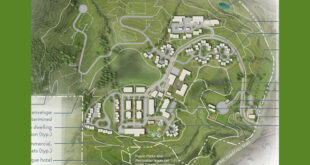Almanac calls for big storm in early December
In a little less than two months, the lifts at Crested Butte Mountain Resort will hum to life and thrill-seeking skiers will travel from far and wide to hit the local slopes. But scientists are again predicting a winter with below-average precipitation and above-average temperatures, which could be bad news for powder-hounds.
According to the latest long-range seasonal forecast from the National Weather Service’s Climate Prediction Center, the southwestern United States have a high probability of receiving below-average precipitation between October and December.
Above-average temperatures are expected along with the decreased precipitation. In a 90-day outlook, Climate Prediction Center deputy director Mike Halpern writes, “The temperature outlook for [October, November, December] 2008 calls for above-normal temperatures across much of the western half of the [continental United States], with the exception of along the west coast and in southern Alaska.”
Upper Gunnison River Water Conservancy District manager Frank Kugel says, based on the early winter forecasts, “It’s looking like it’s going to be drier.”
Kugel points out that long-range forecasts from last fall also called for decreased precipitation, but that wasn’t the case for the Gunnison Valley.
“One only has to look back to last year. We were having a very dry October and November and there were concerns about water supplies, but then December through February were very wet months,” Kugel says.
Science suggests that variations in ocean currents may have created a La Niña weather pattern last year, sending more storms into the northern United States and Rocky Mountains. By contrast, El Niño typically produces more southern and coastal storms.
But this winter, neither El Niño or La Niña seem to be forming. Halpern says it’s shaping up to be a neutral year, and therefore the forecasted above-average temperatures are mostly based on temperature trends.
The Old Farmer’s Almanac has a different take on temperature this winter. The 2009 Old Farmer’s Almanac is calling for below-average precipitation and below-average temperatures for the intermountain region this winter, including Colorado, Utah, Wyoming, and Idaho.
The 2009 Almanac suggests the first big snowstorm in the central mountains will come during the first week of December 2008, and another big storm will follow in the first week of January.
Last winter, the 2008 Almanac predicted that the first big mountain snowstorm would come between December 16 and 22, when the first storm actually landed on December 1 and 2. However, the 2009 Almanac says their precipitation predictions last winter were 90 percent accurate for the majority of the country.
While there’s no telling if either long-range forecast will come to pass, short-range forecasting in the local area should get a lot better next summer with the installation of a mobile radar in Gunnison.
The Colorado Water Conservation Board and National Weather Service are partnering to bring a state-of-the-art radar to Gunnison to study storm events. Although the radar will be in the area for only a few months, officials hope the data gathered will be useful in predicting future storms more accurately.
Kugel says the radar will be placed on a hill behind Western State College, near several other radio towers.
 The Crested Butte News Serving the Gunnison Valley since 1999
The Crested Butte News Serving the Gunnison Valley since 1999


